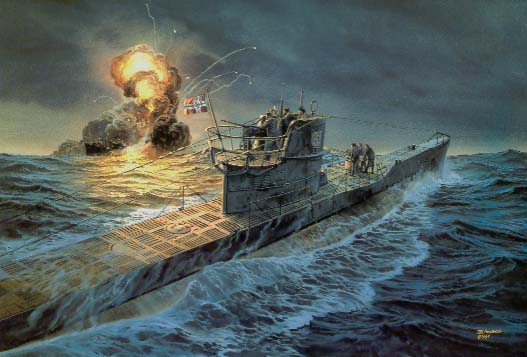Battle of the Atlantic
The U-Boats...a thorn in our side
The Battle of the Atlantic was the single longest campaign in the entire war, lasting nearly the entire duration. Germany's goal was to cut off shipping lanes from Canada to Britain. Close the the beginning of the war, the Germans were doing a vary good job of keeping North American supply trips from Europe. They used submarines and put them into groups call "wolfpacks". They even invaded Canadian waters in the St. Lawrence River. The allies would soon need to find a way to either evade of eradicate the U-boats in the atlantic.
Send Jerry to a watery grave!
The Canadians played a large role in not only shipping supplies, but also helping to fight the U-boats. However, by 1941, Germans were sinking ships faster than the allies could build them. Supply ships needed to travel in convoys (merchant ships surrounded by destroyers for protection). This system worked very well for the most part. As crew training increased and more ships were added, it became very effective. Sonar was also developed which helped detect U-boat from great distances. This system, aided with Canadian long-range bombers and depth charges crippled The German "wolfpacks".
Growing Respect for Canada
At the start of the war, the Canadian navy consisted of 13 ship and 3,000 sailor. By the close of the war, it reached a staggering 370 ships and 100,000 personnl. Some say it was Canada's most decisive contrubution to the war effort and I am inclined to agree. Canada, as a country, gave an all-around contributiuon to the war. Whether they were out fighting, shipping suppliesm, or working in factories, nearly every Canadian was working toward the war effort.It nis very important to have have a sense of pride for you nation. It's things like these that create thast pride. We can be pround of the country we live in and for those who did to protect others.
Subscribe to:
Posts (Atom)


